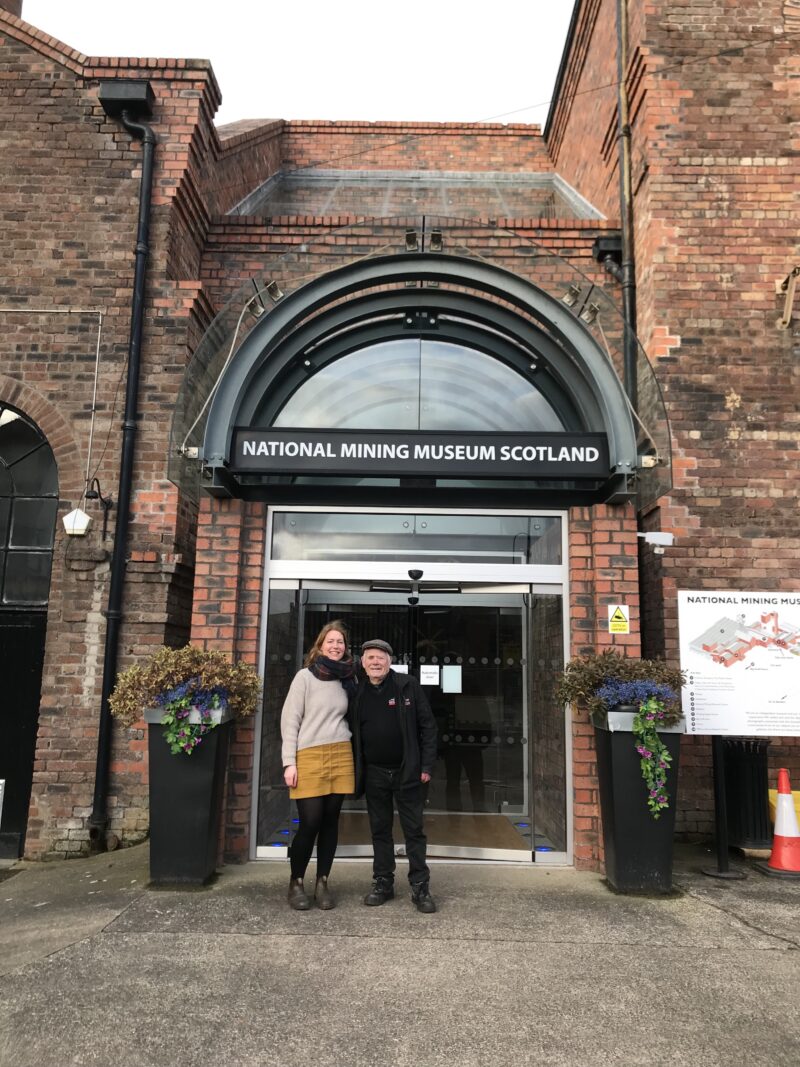
Emma and her cohort of the "Conservation of Transport and Industrial Collections" course.
Congratulations to Emma Griffiths, winner of the 2023 CAPC Emerging Conservator Grant
Emma Griffiths reports on her attendance at the course, "Conservation of Transport and Industrial Collections," taught by Chris Knapp at West Dean College of Arts & Conservation.
Here is Emma's report:
The Conservation of Transport and Industrial Collections course, held at West Dean College of Arts & Conservation, was taught by Chris Knapp, former head of conservation at the Imperial War Museum in Duxford, and Dave Morris, curator and principal conservator at the Fleet Air Arm Museum (FAAM). Over a period of five days, we were given talks on ethics for industrial collections, display environments, approaches to the assessment and documentation of large objects, and the differences between conservation and restoration, particularly as they pertain to industrial collections. As part of the course, we were also given lectures by the MA conservation course leaders in Metals, and Books & Paper, and a chance to visit the workshops and studios around the college.
I found the discussions on ethics of particular interest, as I have spent a great deal of time researching the ethics behind Industrial Collections as part of my internship with Go Industrial and AOC Archaeology. The understanding I gained from this course is that really, there is no difference between the ethical considerations for industrial collections, archaeological collections, and even fine art collections. The goal should always be the same: to preserve the object in trust for society, with the least intervention possible. Sometimes this can mean preservation of the original material, sometimes it can mean preservation of function, sometimes preservation of how an object works, sometimes it can mean preservation of witness marks, but the decision on how best to preserve the object will all depend on its’ significance. To illustrate this point, course leader Dave Morris discussed the treatment of a Corsair KD341, a unique fighter plane from WWII, in the collection at FAAM. In 2000, Dave and his team set out to remove the historically inaccurate paintwork that had been applied to the Corsair when it entered the museum collection in 1963, with the goal of revealing the original paintwork and as many of the witness marks as possible. This was done using a variety of techniques, including very fine wire wool, scalpels, and even masking tape, using minimal solvents wherever possible to avoid any disruption to the original paintwork beneath. This approach would be seen as standard practice in the conservation of fine art, furniture, or archaeological objects, but often when it comes to working with industrial objects, the same rules do not seem to apply. This case study showed that ultimately, it should come down to the significance of the object, and the goal of the conservation treatment.

Emma Griffiths and Chris Knapp at National Mining Museum Scotland.
I found these discussions extremely thought provoking, particularly when discussing the challenges sometimes faced where museums are supported by large numbers of volunteers. There is no substitution for the wealth of knowledge that volunteers working on industrial collections, those with engineering backgrounds, bring to the table. But imparting a conservation approach, and helping staff and volunteers to understand that a less interventive approach is often of greater benefit, will have great impact on the preservation of these collections.
As part of the Powering Our People Project, we will be running workshops at several Go Industrial sites, to teach staff and volunteers basic conservation techniques and approaches. Attending this course has better equipped me to now assist in the implementation of these workshops, and given me a better understanding of the benefit they will have for the staff and collections.
Emma Griffiths
